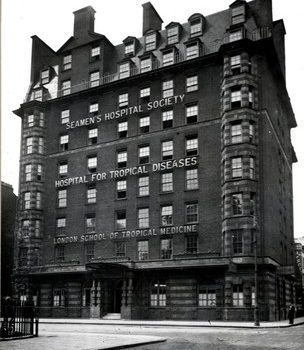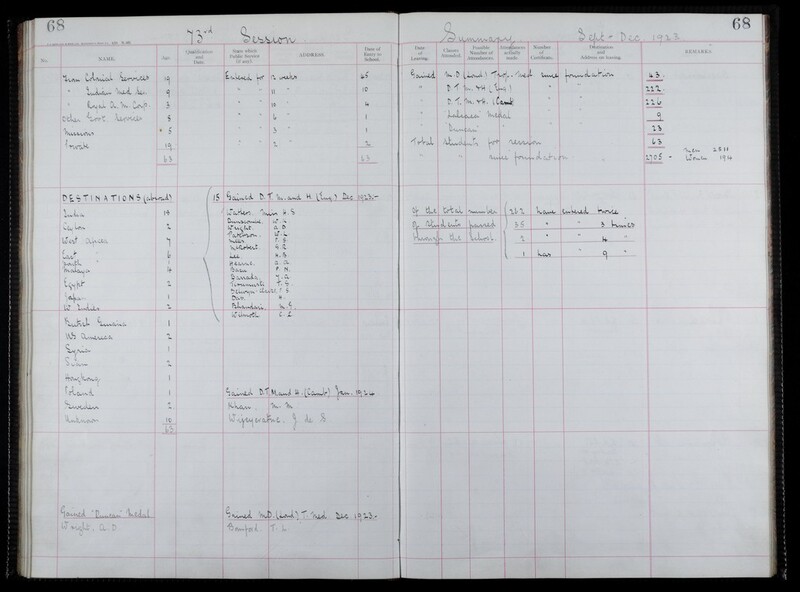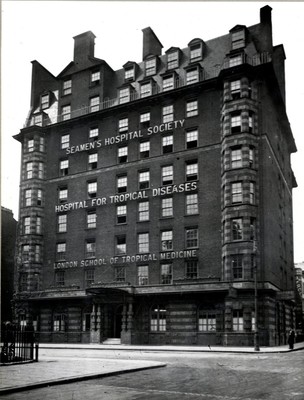As we welcome new students to the London School of Hygiene & Tropical Medicine, it seems appropriate that we reflect on the students who attended 100 years ago, the class of 1923.
The 73rd session ran from September to December. 63 students attended the School, of these 57 were men and 6 were women. They came from the following services:
- Colonial Service: 19
- Indian Medical Service: 9
- Royal Army Medical Corps: 3
- Other Government Service: 3
- Missions: 5
- Private: 19
The School’s student registers record a number of details about the students including their destination on leaving, the majority of students went to Asia (28), and the next most popular destination were countries in Africa (16) but students ended up all over the world including Europe, West Indies and America. Unfortunately there is no group photo of this session.
As is shown, many of the students came from the Colonial Service and went on to work in British Colonies. LSHTM has recently published LSHTM and Colonialism – A report on the Colonial History of the London School of Hygiene & Tropical Medicine (1899 – c.1960) which provides a detailed account of our colonial origins and its legacy. LSHTM was set up as a colonial institution and benefitted from and contributed to British colonialism in a variety of ways between 1899 and 1960. It is largely to its role in British colonialism that the LSHTM owes its current power and position as a leader in health research and teaching.
The LSHTM Archives Service is re-examining the collections we hold, the stories we tell and the role we play in critically engaging with the School’s colonial legacy. We have developed a set of principles for decolonising the archive which we are incorporating into our daily working practice.
Students undertook a 12 week course and which cost £21 (£1326.22 in today’s money). Students had to be qualified medical practitioners of any nationality or sex or be in the fifth year of their medical studies. The School Committee had the power, at their discretion, to admit other applicants under special circumstances. Students were asked to bring their own microscopes, with slides and cover glasses, the School provided stains, chemical reagents and pathological material.
Students were taught by a variety of lecturers on tropical diseases including malaria, blackwater fever, trypanosomiasis, yellow fever, leishmaniasis, filariasis, dysentery, pellagra, beri-beri, cholera, plague, dengue, leprosy and eye diseases.
The prospectus for 1923 also lists exams questions from the previous session which included:
- Write a short essay on the extraction of the teeth.
- A small town is reported to be ‘very malarious’. What investigations would you make with a view to measuring the amount of infection amongst the population?
- Identify the snake exhibited and state briefly the symptoms like to follow an effective bite from such a snake
- Describe the operation of ‘evisceration of the eyeball’. Under what circumstances would you recommend the operation?
The students were taught in Endsleigh Gardens, this was a former hotel that was converted to a hospital for officers during the First World War and was suitably equipped to house both the Hospital for Tropical Diseases and the School. This building is still standing in Gordon Street and is now the student union for University College London. The School moved from its original home in the Albert Docks in early 1920, although the building wasn’t officially opened until November 1920. The School remained here until 1929 when we moved to the Keppel Street site.
There was a link with Keppel Street as some of the students lived in the Indian YMCA which was on the Keppel Street site. In August 1916 a wooden mock-Tudor YMCA Hut opened on the corner of Keppel and Gower Street in London’s Bloomsbury. “The Shakespeare Hut” as it was called became a home from home for predominantly Anzac soldiers on leave from the Front and remained so until 1919 when it housed the Indian YMCA for three years before it was pulled down in 1920s to make way eventually for the London School of Hygiene & Tropical Medicine which still occupies this site today.
For further information on the history of LSHTM, please contact archives@lshtm.ac.uk








